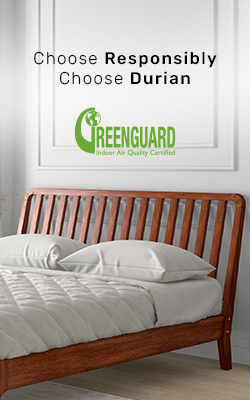Imagine settling into a sofa that feels just right the moment you sink into its cushions—a piece that complements your lifestyle, suits your space and stands up to daily life with ease. Buying a sofa is an investment in comfort and style, so a little preparation goes a long way. In this friendly guide, we’ll walk you through five key considerations—from understanding different styles to caring for your new purchase—so you can shop confidently and find the sofa that really feels like home.
What Are the Different Types of Sofas?
Sofas come in an array of shapes and sizes, each designed to suit distinct needs and room layouts. The classic three‑seater remains popular for its symmetry and balance, fitting neatly against a standard wall. If you have a corner or open‑plan space, consider an L‑shaped (corner) sofa—it maximises seating while defining zones in larger rooms. For more formal living areas, a two‑seater sofa or a sleeker settee can create an intimate conversation spot. If you love variety, modular sofas let you mix and match pieces—so you can reconfigure the seating whenever you fancy a change. And don’t forget statement designs, like chaise longues or curved sofas, which bring a sense of drama and luxury to a room.
How to Measure for Your Sofa?
Accurate measurements are crucial. Begin by noting the length of the wall or space where the sofa will sit, then measure ceiling height and any nearby windows or radiators. Allow at least 30 cm of clearance on either side for easy movement and to prevent a cramped feel. If the sofa will be delivered through narrow doors or stairwells, measure those too—remember to account for corners and landings. Sketch a simple floor plan to visualise how the piece will fit alongside other furniture. It’s better to discover you need a slightly smaller model before you hit “order” than to wrestle a sofa into place later!
What Are the Different Sofa Fabric Types?
The upholstery you choose affects both appearance and longevity. Natural fabrics like linen and cotton are breathable and comfortable, but may show wear more quickly in high‑traffic homes. Synthetic blends (polyester, acrylic) are often treated for stain resistance and can be easier to clean—ideal if you have children or pets. Velvet brings a sumptuous, soft touch and catches the light beautifully; just bear in mind it may require gentle maintenance. Leather develops character with age and is simple to wipe clean, though it can be prone to scratches and may feel cooler to the touch. When shopping, ask for fabric swatches to test them under your room’s lighting and feel their texture firsthand.
What Are Sofas Filled With?
The filling determines how your sofa feels and performs over time. Most modern sofas use high‑resilience foam cores for support—this type of foam springs back to shape and resists sagging. Some combine foam with a feather or fibre wrap, offering a soft “cloud‑like” initial feel that settles into a firmer base. Down‑filled sofas provide ultimate plushness but need regular plumping to maintain their shape. For those seeking extra durability, look for pocket‑sprung seats: small springs wrapped individually within the seat cushion, much like a good mattress. Always test a few options in store to find the balance between softness and support that suits you.
How to Care for Your Sofa?
A little maintenance keeps your sofa looking and feeling its best. Vacuum upholstered surfaces weekly using a soft brush attachment to remove dust and crumbs. Rotate and flip any loose cushions regularly to ensure even wear. For fabric sofas, check whether the covers are removable and machine‑washable, or if they require professional cleaning—follow the manufacturer’s care label closely. Leather sofas benefit from a wipe‑down with a damp cloth and an occasional application of leather conditioner to prevent drying and cracking. And always attend to spills promptly: blot liquids with a clean cloth, avoid rubbing, and treat stains according to the fabric’s recommendations.
Buying a sofa is a blend of practical planning and personal style. By exploring the varieties available, measuring carefully, choosing the right materials and understanding how your sofa is built and maintained, you’ll be well on your way to selecting a piece that looks great, feels wonderful and lasts for years. Feel free to explore our range to discover the perfect style and fabric for your home. Remember, this is more than just furniture—it’s the backdrop to your everyday moments. Happy shopping!












